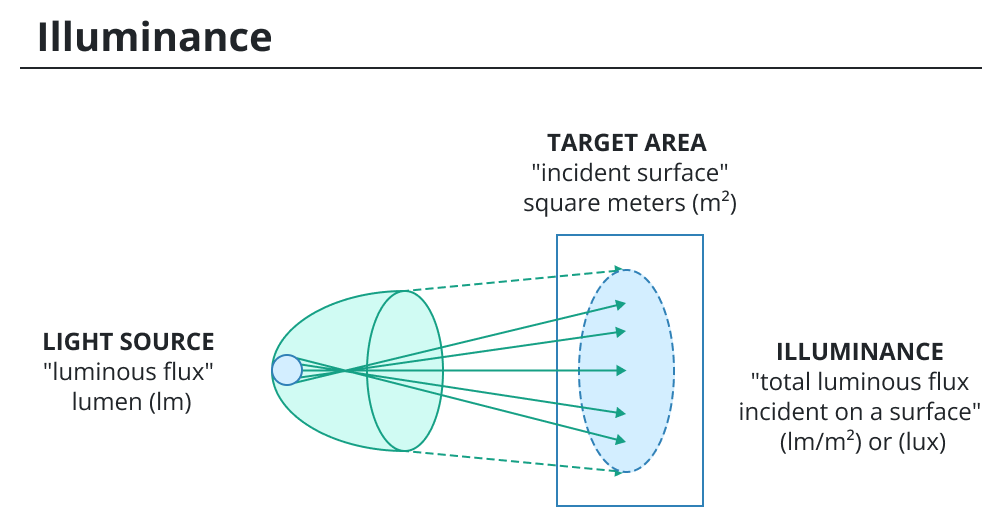To calculate result you have to disable your ad blocker first.
Light Illumination Converter
Write the negative or non-negative number hit on calculate button to get the answer in different candles and other units.
Light illumination calculator
Light illumination calculator is used to estimate the amount of light that is delivered to a specific area or surface.
What is the light illumination?
Light illumination refers to the process of providing or creating light in a space or on an object. It involves the deliberate use of light sources to illuminate an area or subject, making it visible and enhancing its appearance.
Light illumination can be achieved through various light sources, such as natural light (sunlight), artificial lighting fixtures (e.g., lamps, fluorescent lights, LED lights), or a combination of both. The type, intensity, color temperature, and direction of light can be manipulated to achieve the desired illumination effect.

Light illumination serves several purposes, including:
Visibility:
| Illumination ensures that objects and surroundings are adequately lit, allowing us to see and perceive them. It enhances visibility, reduces shadows, and helps to discern details. |
Safety:
| Proper lighting is essential for safety in various environments. Illumination in public spaces, roadways, and workplaces helps prevent accidents, facilitates movement, and enhances security by making potential hazards or obstacles visible. |
Aesthetics:
| Light is a fundamental element in creating visually appealing environments. Illumination is often used in architecture, interior design, and artistic installations to enhance the aesthetics of spaces, accentuate specific features, or create desired moods and atmospheres. |
Task Performance:
| Adequate lighting is crucial for performing tasks effectively and efficiently. In workplaces, educational settings, or medical facilities, proper illumination helps individuals perform their duties accurately, reducing errors and eye strain. |
Emotional Impact:
| Light has a significant influence on our emotions and well-being. Different lighting conditions can evoke specific feelings or moods, such as relaxation, focus, or stimulation. Illumination can be intentionally adjusted to create the desired emotional impact in a given setting. |
Types of light illumination:
There are many other specialized lighting techniques and concepts utilized in various contexts, such as stage lighting, landscape lighting, or dynamic lighting systems. The choice of lighting type depends on the intended purpose, desired effect, and the specific requirements of the space or application.
Here are some common types of light illumination.
Types | Detail |
Ambient Lighting:
| Also known as general lighting, ambient lighting provides overall illumination to a space, allowing people to navigate and perform tasks comfortably. |
Task Lighting:
| It is typically brighter and more concentrated than ambient lighting to reduce eye strain and enhance visibility. Examples of task lighting include desk lamps, under-cabinet lighting in kitchens, or adjustable spotlights. |
Accent Lighting:
| Accent lighting is used to highlight specific objects, architectural features, or artworks within a space. It adds depth and visual interest by creating contrasts and focal points. Accent lighting can be achieved through track lights, wall-mounted fixtures, or recessed spotlights. It helps draw attention to specific areas or objects and creates a dramatic effect. |
Decorative Lighting:
| Decorative lighting focuses on the aesthetic aspect of illumination. It includes ornamental fixtures and lighting elements that serve as decorative objects themselves. Decorative lighting fixtures, such as pendant lights, chandeliers, or wall sconces, are often used to enhance the visual appeal of a space and contribute to its overall style or theme. |
Natural Lighting:
| Natural lighting refers to the use of sunlight as a primary source of illumination. It can create a pleasant and inviting atmosphere, provide a sense of connection to the outdoors, and offer various health benefits. Strategies for optimizing natural lighting include maximizing windows, using skylights or light tubes, and incorporating reflective surfaces to distribute light. |
Colored Lighting:
| Colored lighting involves the use of light with different hues to create specific moods or effects. Colored filters or RGB (Red, Green, Blue) LED lights can be used to produce a wide range of colors. Colored lighting is often used in theatrical settings, entertainment venues, or architectural lighting installations to evoke emotions, set a specific ambiance, or create visual interest. |
Example Section:
Here in this section with the help of examples tool will be explained.
Example 1:
Convert -12 into other light illumination units.
Solution
Method | Value | Unit |
Centimeter candle: | -12.000000 | cm*c |
Flame: | 2787.0912 | fl |
Footcandle: | -11148.365 | ft*c |
Lumen/square cm: | -12.000000 | lm/cm2 |
Lumen/square foot: | -11148.365 | lm*ft2 |
Lumen/square meter: | -120000.00 | lm/m2 |
Lux: | -120000.00 | lx |
Meter candle: | -120000.00 | mc |
Nox : | -1.2000000e+8 | nx |
Photo: | -12.000000 | ph |
Watt/square centimeter: | -0.017520000 | W/cm2 |

